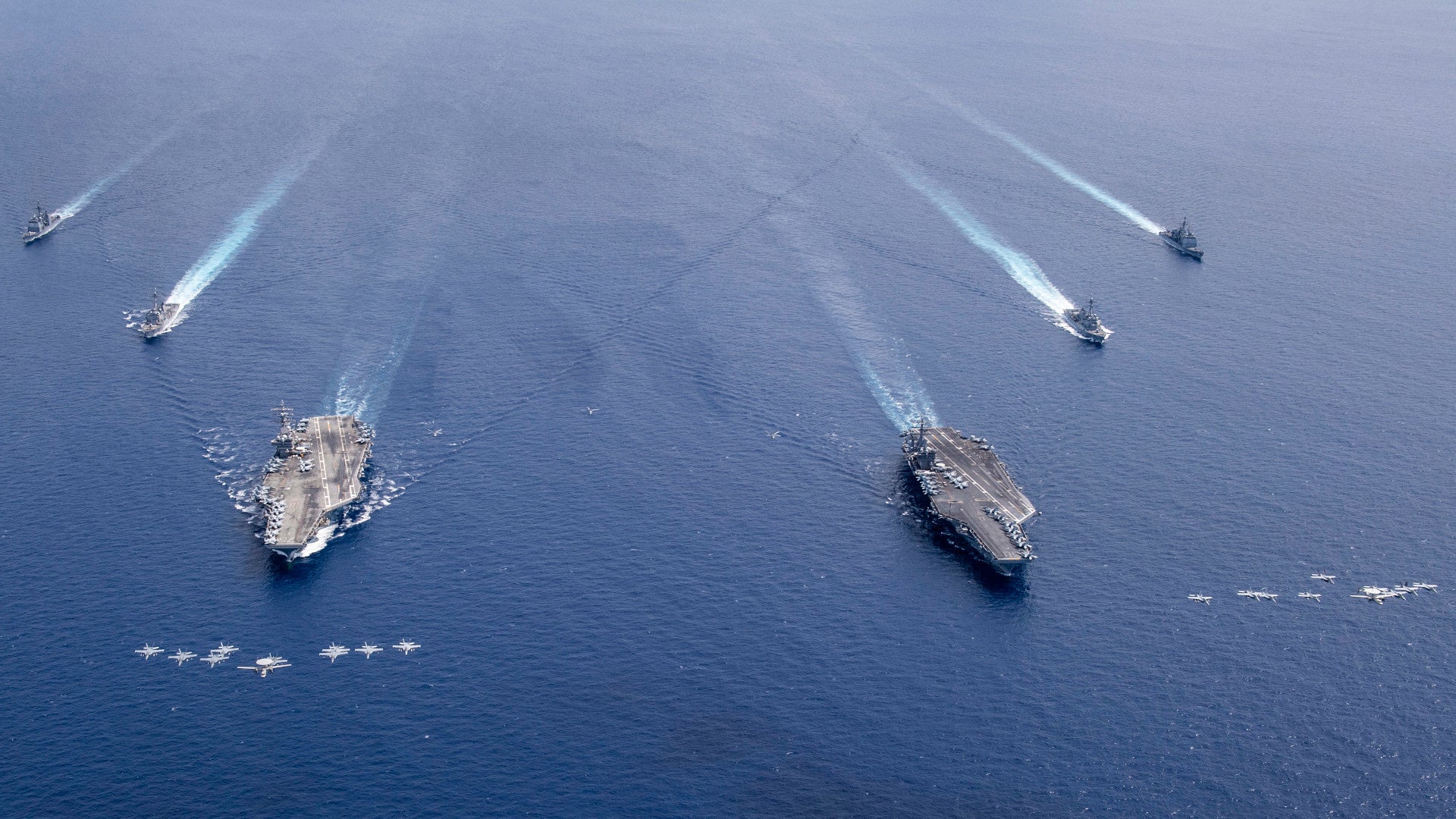For the first time since 2014, the U.S. Navy has two Nimitz class aircraft carriers and elements of their respective strikes groups operating together in the South China Sea. It is a significant show for force in what is arguably the region’s most hotly contested body of water and a clear signal to China, which claims the bulk of it as its sovereign territory.
The first-in-class USS Nimitz and her sister ship the USS Ronald Reagan first began conducting exercises together in the South China Sea on July 4, 2020. Carrier Air Wings 17 and 5, aboard the Nimitz and Ronald Reagan, respectively, have also been training together. Ticonderoga class cruisers and Arleigh Burke class destroyers from the two carriers’ strike groups are also present.
The Nimitz, which is homeported at Naval Base Kitsap in Washington State, first arrived in the U.S. 7th Fleet’s general area of responsibility in the Western Pacific on June 17. The Ronald Reagan, which is assigned to 7th Fleet, is forward-deployed in Japan.
“Reagan’s object is ‘Peace Through Strength,’ and that is exactly what her dedicated Sailors bring to this theater,” Navy Captain Pat Hannifin, the commanding officer of the Ronald Reagan, said in a statement. “Committed to our allies and a free and open Indo-Pacific, Reagan brings a flexibility and combat lethality unmatched anywhere in the world. These operations with Nimitz demonstrate that we are but one component of a much larger and equally committed naval force.”

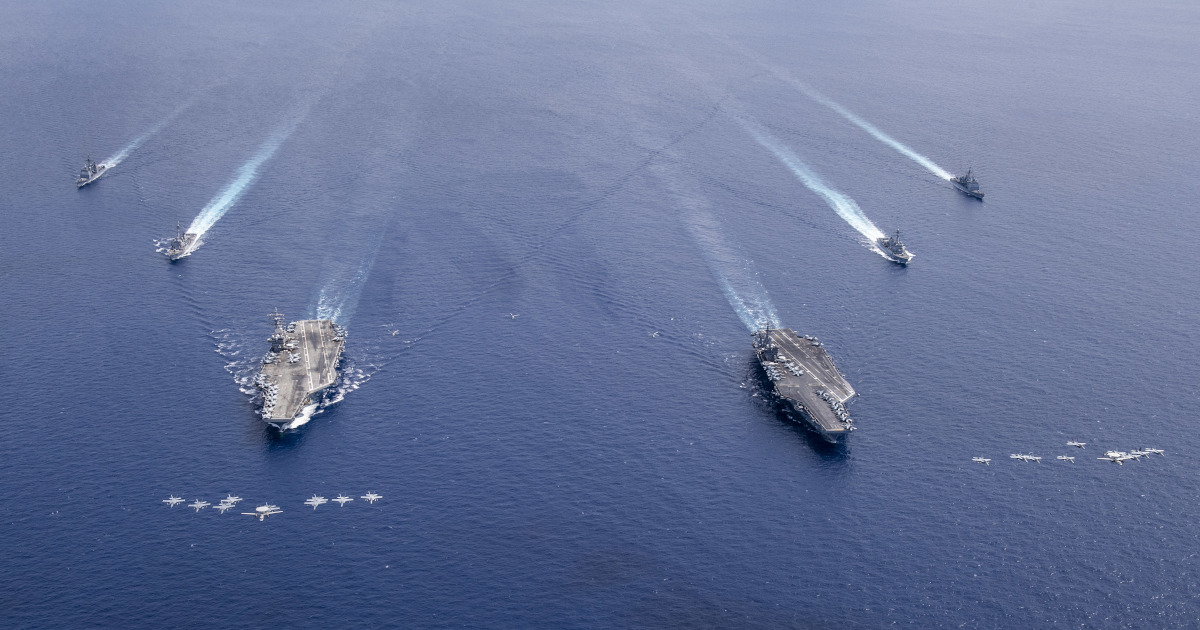
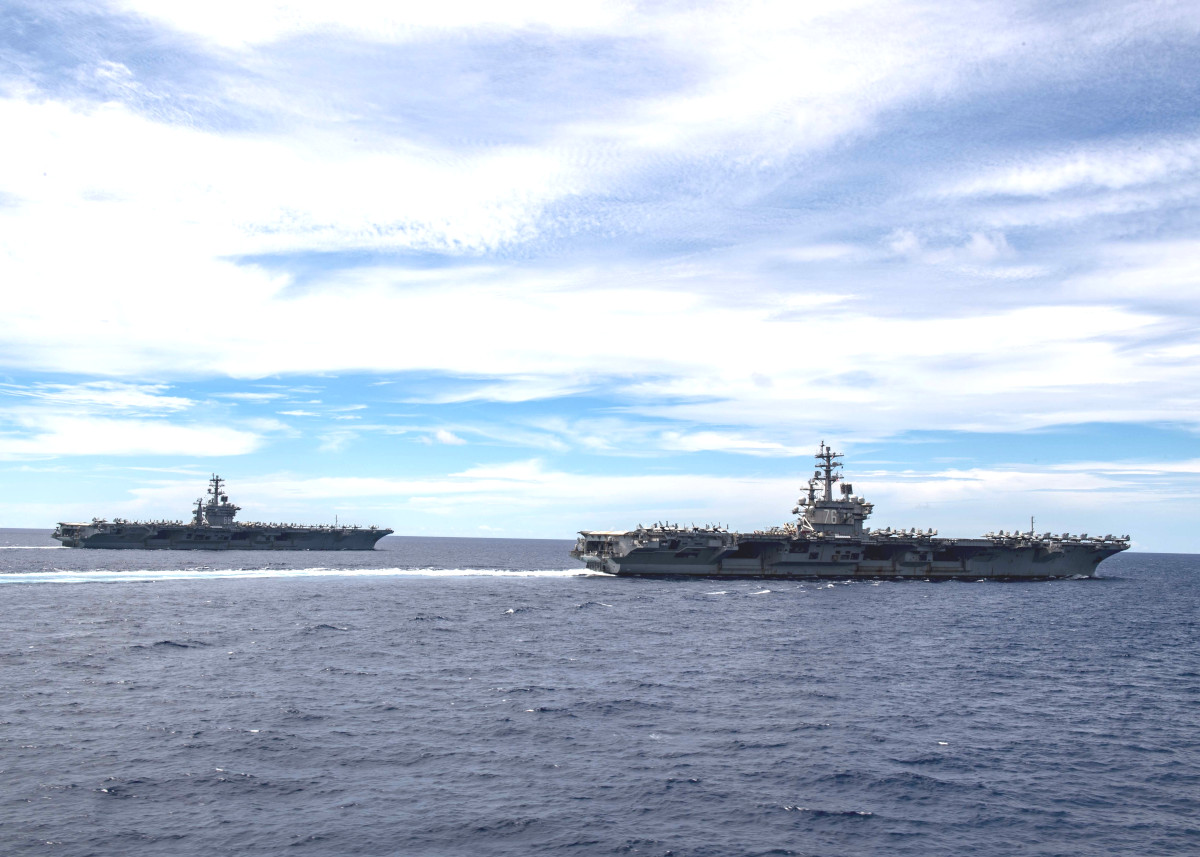
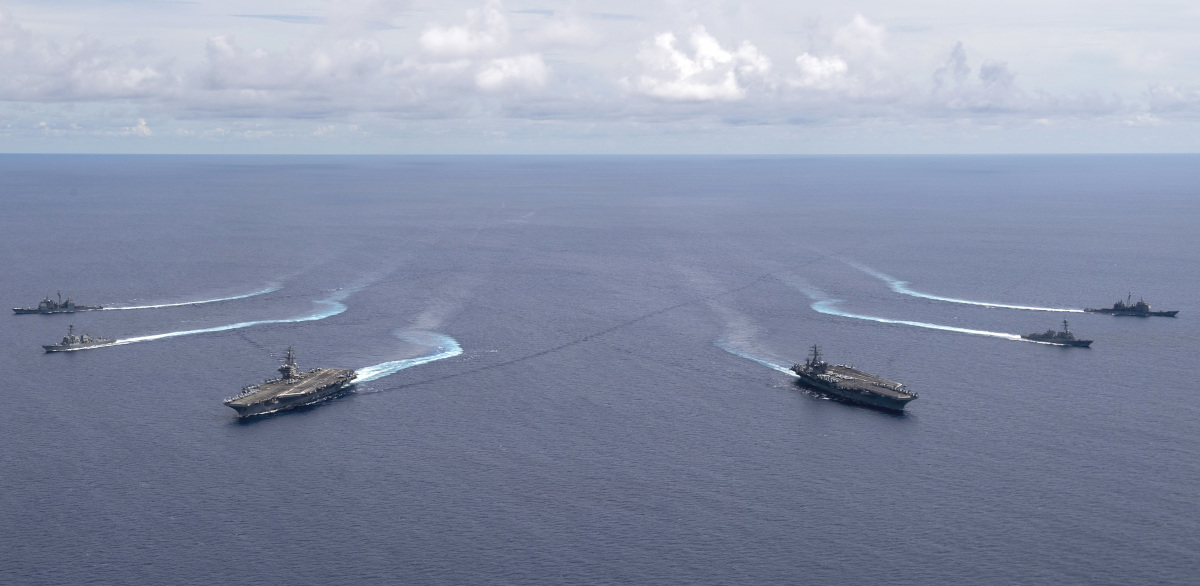
The last time the Navy sent two supercarriers into the South China Sea was six years ago, when the Nimitz class carriers USS George Washington and USS Carl Vinson, together with portions of their respective strike groups, sailed together there, as well as in the disputed East China Sea further to the north. Dual carrier operations in this region had been relatively rare occurrence even before then, according to the Navy, with the Kitty Hawk class USS Constellation joined the Carl Vinson there in 2001.
Having two or more carriers operating alongside each other at once is a major expenditure of resources that makes these kinds of shows of force uncommon, in general. Besides the South China Sea trips, in the past decade, the only other instance of this kind of large-scale exercise in the Western Pacific was in 2017, when the USS Theodore Roosevelt joined the Ronald Reagan and Nimitz off Guam. Of course, the Navy has had individual carrier strike groups operating regularly throughout the Pacific over the years.
That the Navy has two carriers in the South China Sea for the first time since 2014 is also notable since that year the Chinese government’s construction of controversial man-made islands in the region increased significantly. These outposts have grown drastically matured in the interceding seven years and remain a key component of Beijing’s strategy for enforcing its expansive territorial claims in the face of significant international opposition.
“Working together with the Ronald Reagan carrier strike group provides advanced, high-end training opportunities that increase our warfighting readiness,” Navy Captain Todd Cimicata, head of Carrier Air Wing 17, said in a statement. “Dual carrier operations demonstrate unique U.S. capabilities, increase carrier strike force command and control experience, and show our commitment to regional allies. Additionally, our operations reinforce the rights, freedoms, and lawful use of the sea and airspace guaranteed by international law.”
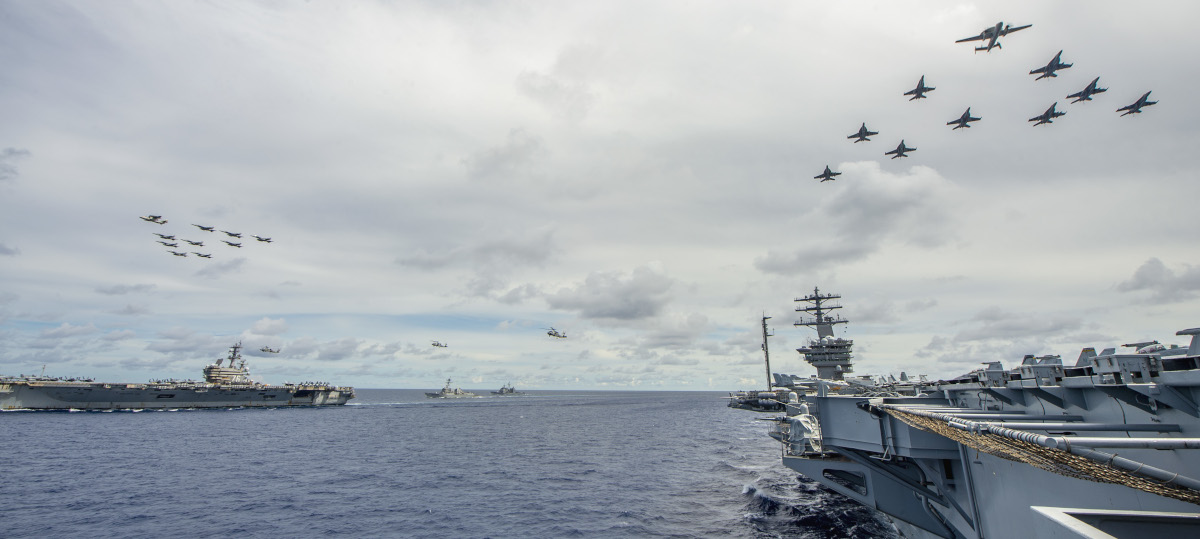
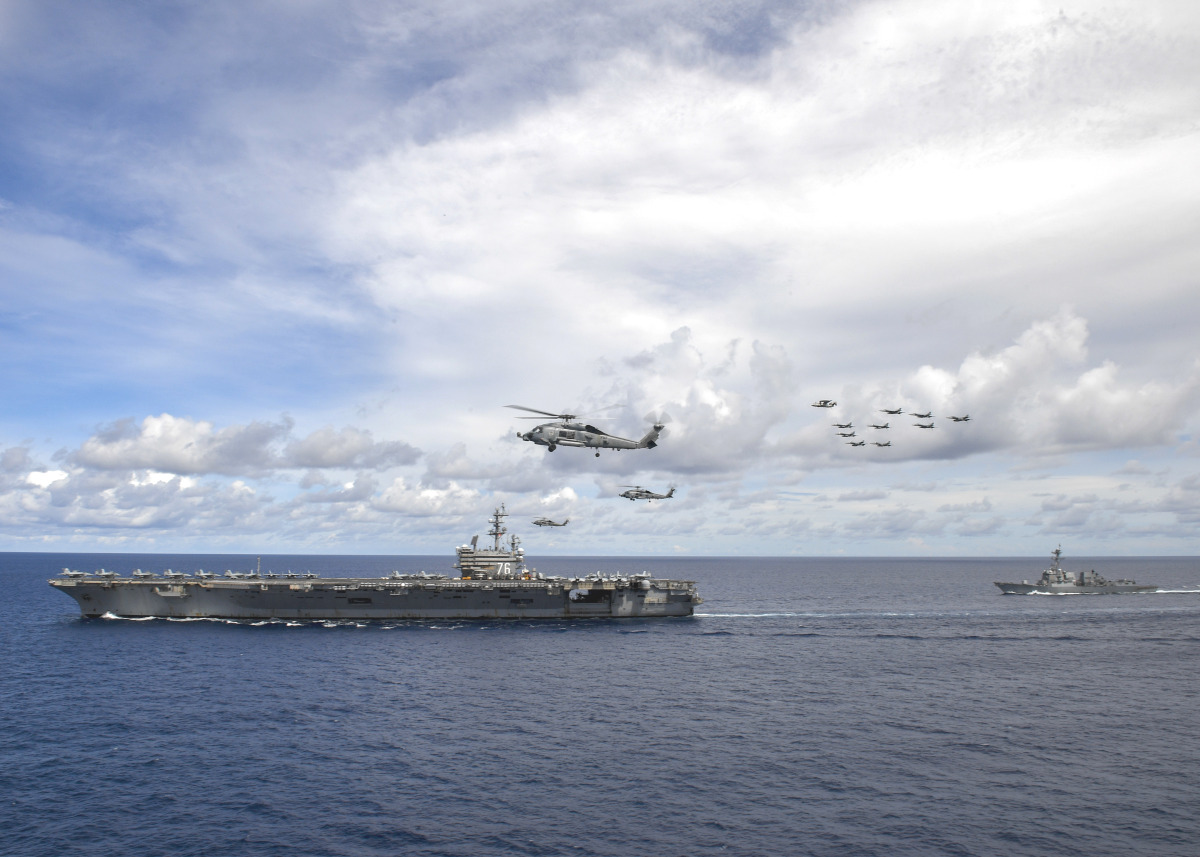
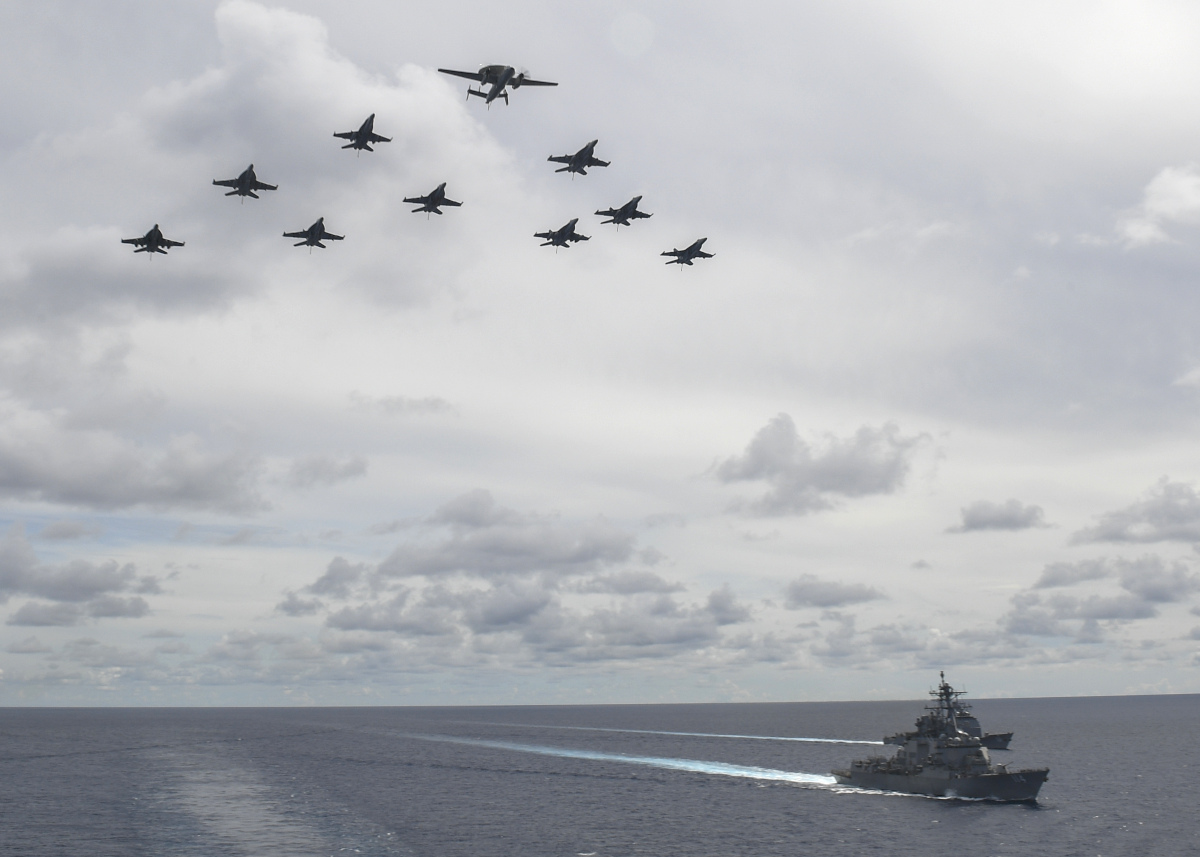
The U.S. Navy has stepped up so-called Freedom of Navigation patrols, or FONOPs, near China’s outposts in the region, which are intended to challenge Beijing’s claims, in recent years. The service also actively monitored the dispute between Chinese and Malaysian authorities surrounding the operations of the drillship West Capella in the southern end of the South China Sea in May. Malaysia had chartered the ship to conduct explorations of potential undersea oil and natural gas deposits. The activity took part in areas that Vietnam also claims drawing that country into the mix, as well.
There has been a number of other notable shows of force aimed squarely at China throughout the Pacific in recent months, as well. This includes the loading of live AGM-158 Joint Air-to-Surface Standoff Missile (JASSM) cruise missiles onto a U.S. Air Force B-1B bomber on Guam during a new short-notice deployment there, part of a new concept of operations for employing that service’s heavy bombers globally, in May. The month before that, U.S. Marine Corps F/A-18C/D Hornets based in Japan had conducted a rare exercise carrying live AGM-48D Harpoon anti-ship missiles.

All of this comes amid a particularly low point in U.S.-Chinese relations over a host of issues, including the fallout from the COVID-19 pandemic. The Navy has been particularly hard hit by the virus and a major outbreak onboard the Nimitz class carrier USS Theodore Roosevelt
raised questions earlier this year about the potential for it to significantly hamper American naval operations, as well as other military activities, in the Pacific and elsewhere.
There has also been increasing friction between Chinese and Taiwanese authorities and the tensions emanating from the Chinese government’s imposition of a new draconian security law on Hong Kong. The U.S. military has stepped up FONOPs through the Taiwan Strait, using both warships and aircraft, as well. In June, a Navy C-40A passenger transport actually flew over Taiwan proper, which Beijing considers to be its sovereign airspace, and that same month the U.S. Army released rare video footage of Green Berets training with Taiwanese special operations forces on the island.
It’s worth noting that during the Third Taiwan Strait Crisis between 1995 and 1996, then U.S. President Bill Clinton dispatched two carrier strike groups to the Western Pacific near that island and had the Nimitz, together with the Tarawa class amphibious assault ship USS Belleau Wood that was also operating in the region, actually sail through the Taiwan Strait. This has been cited as a key factor in the initiation of the Chinese military’s massive buildup and modernization efforts over the last three decades.
China’s state-run Global Times newspaper notably ran a piece titled “China has wide selection of anti-aircraft carrier weapons at South China Sea” after Nimitz and Ronald Reagan arrived in the South China Sea on July 4. This focused heavily on the Chinese military’s DF-21D and DF-26 ballistic missiles, which have anti-ship capabilities that you can read about in more detail in this past War Zone piece. “The South China Sea is fully within the grasp of the Chinese People’s Liberation Army (PLA), and any U.S. aircraft carrier movement in the region is solely at the pleasure of the PLA,” the story boasted.
The presence of the two carriers has now drawn a formal rebuke from the Chinese government, as well. Foreign ministry spokesperson Zhao Lijian decried the exercises, saying the U.S. military conducted them “totally out of ulterior motives” and that they undermined the peace and stability of the region. Of course, authorities in China deny that their own extensive militarization of the region and increasingly aggressive efforts to enforce their territorial claims have any similar impacts.
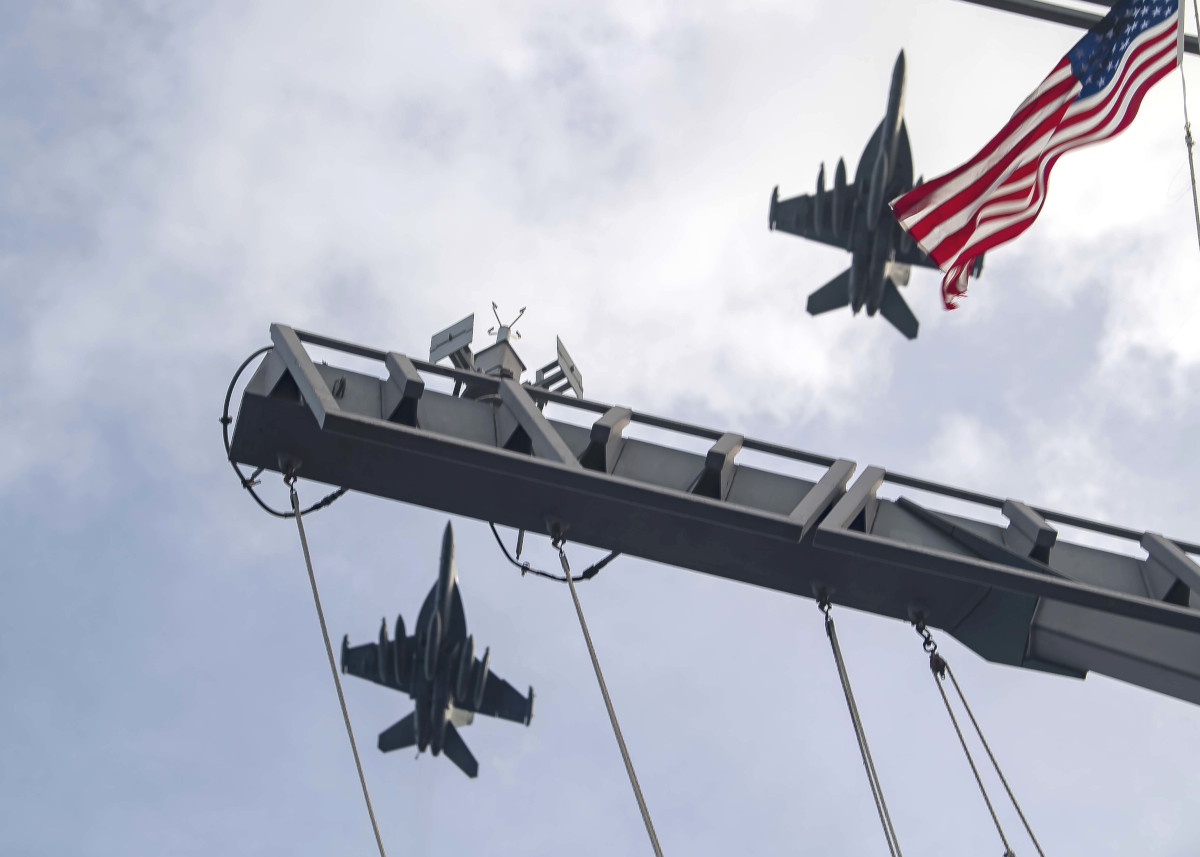
China has been stepping up its own naval activity in the Western Pacific in recent months, including exercises involving both of its own aircraft carriers, though not working together like their American counterparts. Just on July 3, the Pentagon had criticized Chinese exercises in the South China Sea as destabilizing.
“Conducting military exercises over disputed territory in the South China Sea is counterproductive to efforts at easing tensions and maintaining stability,” a Pentagon statement said. “The PRC’s [People’s Republic of China’s] actions will further destabilize the situation in the South China Sea. Such exercises also violate PRC commitments under the 2002 Declaration on the Conduct of Parties in the South China Sea to avoid activities that would complicate or escalate disputes and affect peace and stability.”
It’s certainly possible that the Navy’s decision to send Nimitz and Ronald Reagan into the South China Sea might now prompt a tit-for-tat response.
With all this in mind, it will very interesting to see where the two carriers go after finishing up in the South China Sea and if they head to their next destination together, as well.
Update: 4:20 PM EST—
An Air Force B-52H bomber also flew a long-range training mission to the South China Sea on July 5, to work alongside the two carrier strike groups. The aircraft from the 2nd Bomb Wing’s 96th Bomb Squadron, based at Barksdale Air Force Base in Louisiana, subsequently landed at Andersen Air Force Base on Guam. The entire flight lasted 28 hours.
“Bomber Task Force demonstrates U.S. capability to rapidly deploy to a forward operating base and execute long-range strike missions,” Air Force Lieutenant Colonel Christopher Duff, the 96th Bomb Squadron commander, said in a statement. “This sortie demonstrates our ability to reach out from home station, fly anywhere in the world and execute those missions, rapidly regenerate from a forward operating base and continue operations.”
“As we operate throughout the Indo-Pacific theater, our Fleet units continue to seek out every opportunity to strengthen our capabilities and proficiency at conducting joint, combined, all-domain operations with our partner teams,” U.S. Navy Commander Joshua Fagan, the Air Operations officer for Task Force 70, U.S. 7th Fleet’s main task force, added.. “Some of the recent events bringing Air Force B-52s and B-1s, Navy aircraft, and our ships at sea together on shared networks in support of integrated missions have been good opportunities for us to exercise the joint mission planning and coordination processes that we depend on to operate safely and effectively out here.”
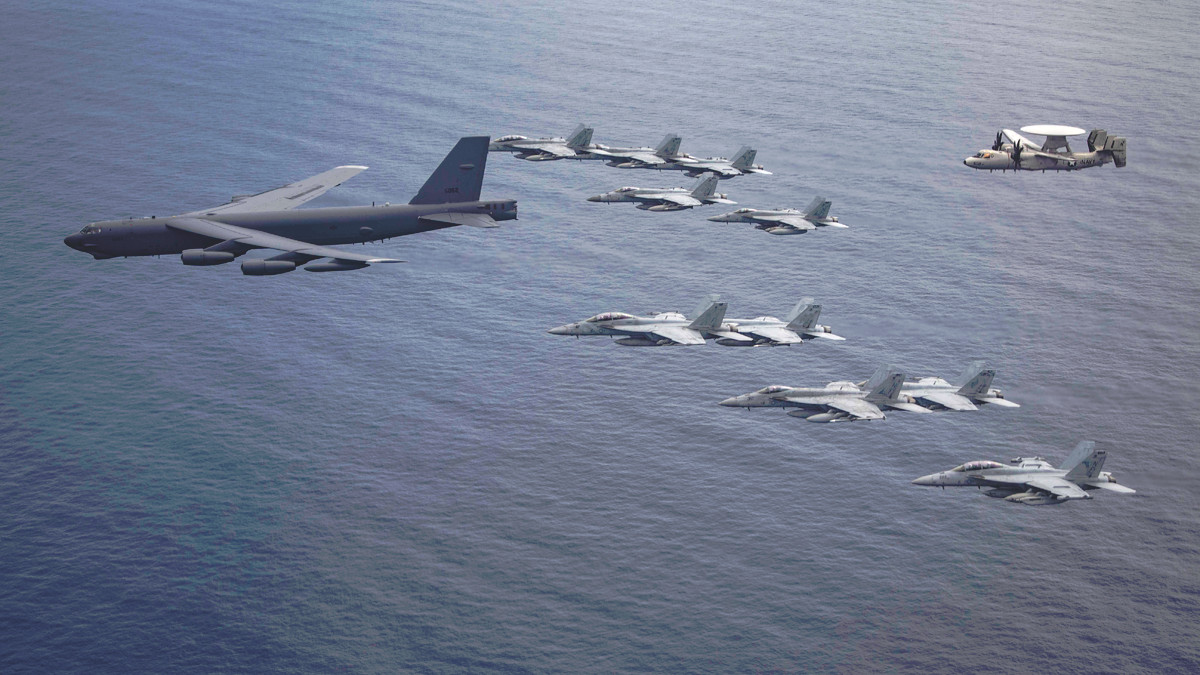
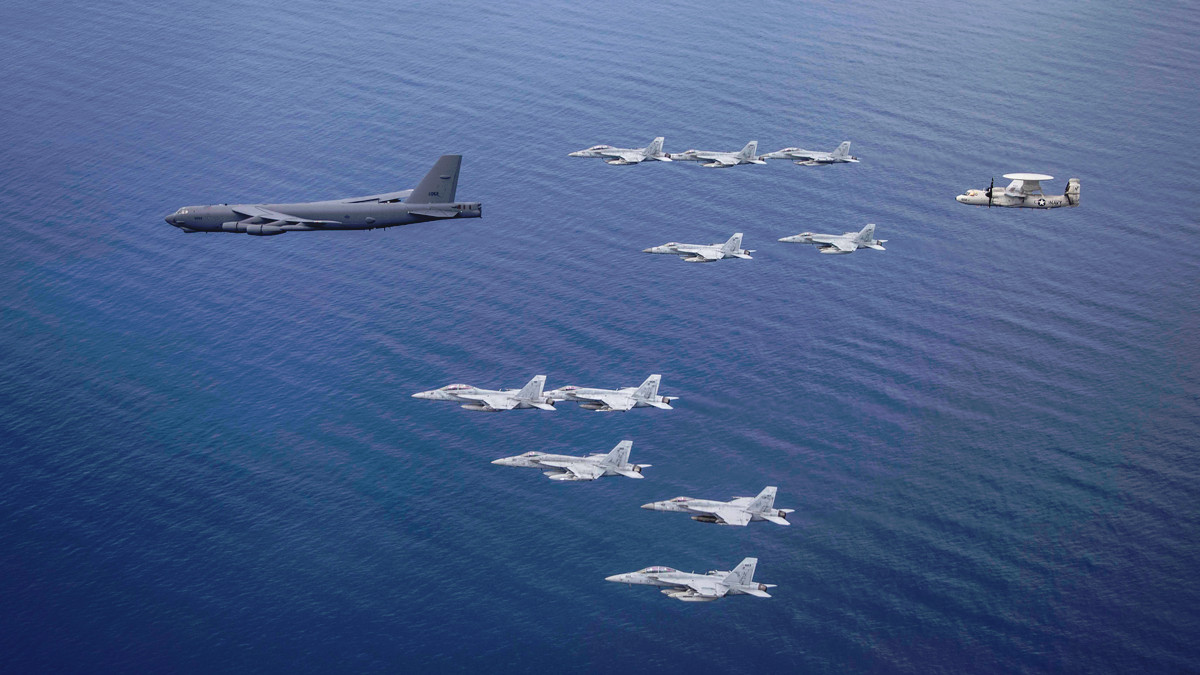
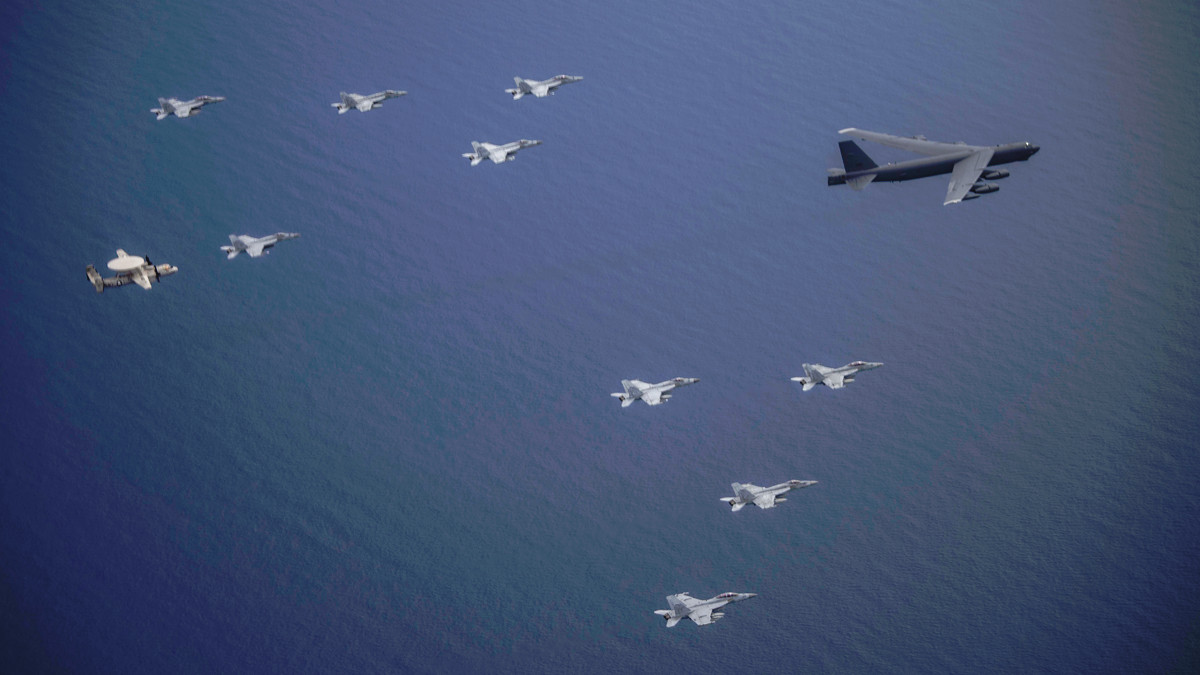
Contact the author: Joe@thedrive.com
